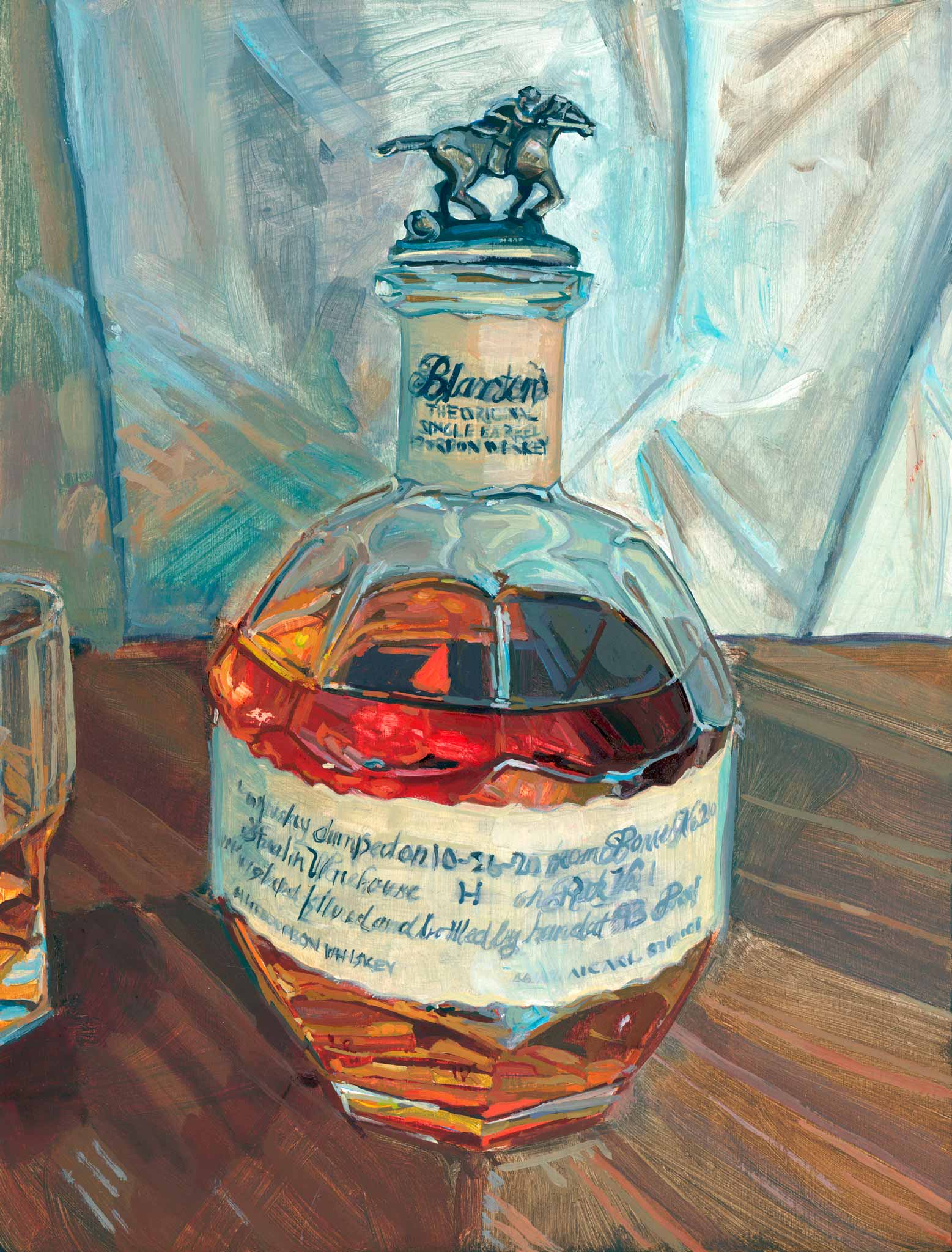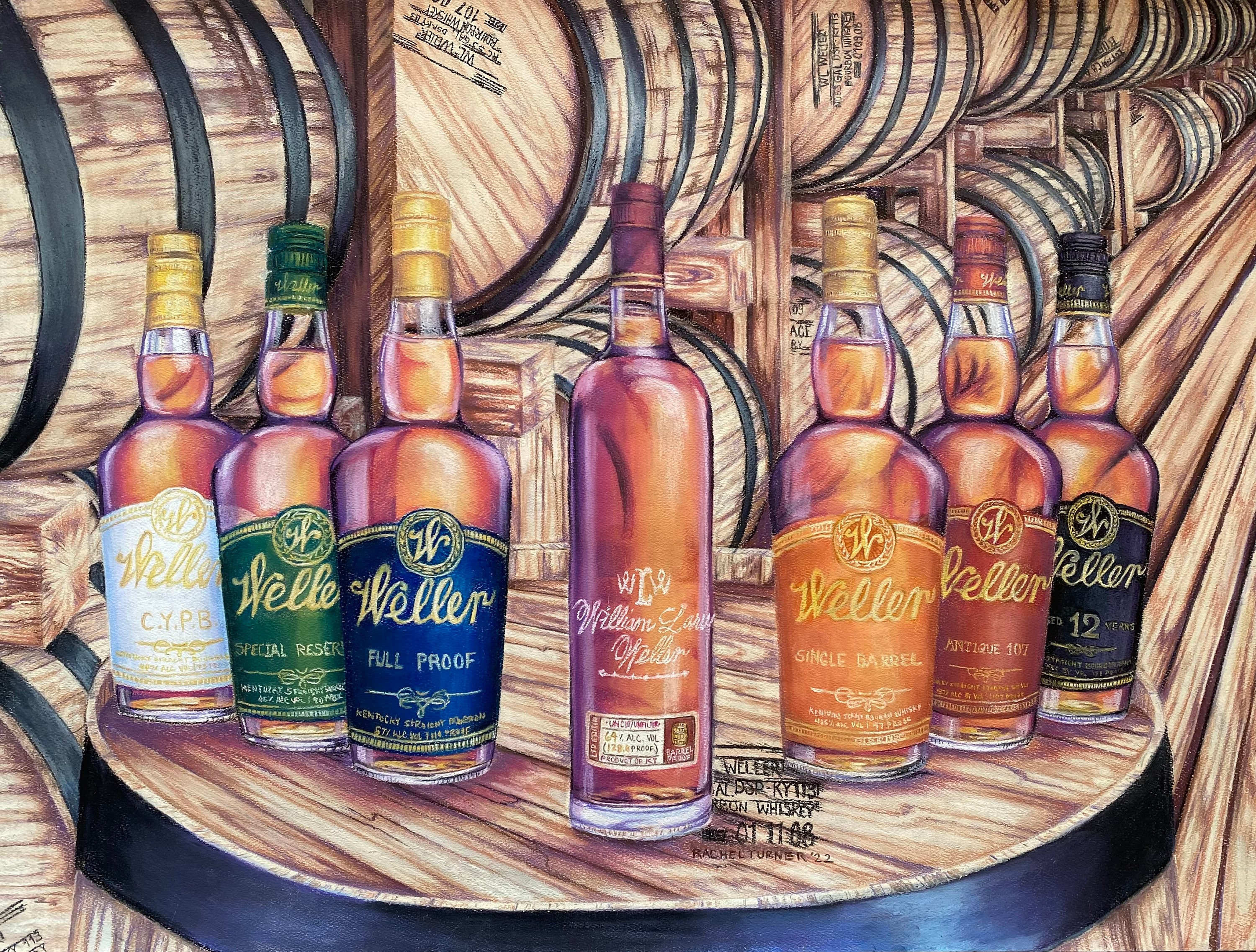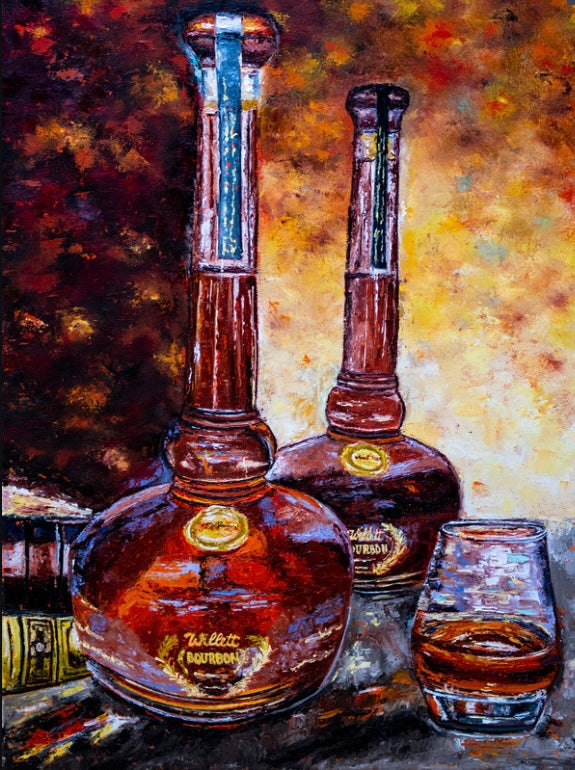Realism Art in the Whiskey Sector: Illustrating Moments of Distillation
Catching the Essence of Whiskey Art Through One-of-a-kind Visual Representations and Styles
The art of scotch extends past the fluid itself, showing up through a variety of visual depictions that encapsulate its fabled heritage and craftsmanship. What stays to be uncovered is how these developing styles reflect not only the bourbon itself but additionally the altering landscape of creative analysis. Bourbon Art.
The Background of Bourbon Art

As whiskey manufacturing spread, so also did the desire to boost its experience through art. From the detailed inscriptions on very early barrels to the sophisticated labels of modern bottles, each component shows an one-of-a-kind imaginative vision, offering as an aesthetic narrative of the bourbon's heritage.
In the 18th and 19th centuries, the surge of the industrial transformation even more boosted whiskey art, resulting in innovative packaging and advertising that captured customer interest. Developers and musicians began exploring with looks, imbuing whiskey-related imagery with symbolic meanings that communicated concepts of neighborhood, tradition, and craftsmanship.
Today, whiskey art continues to progress, blending traditional approaches with contemporary art types. Limited Edition. This continuous discussion between the spirit and its graph underscores the long-lasting bond between whiskey and society, enhancing the general experience for fanatics worldwide
Iconic Bottle Layouts
While numerous aspects add to the attraction of bourbon, famous container designs play a crucial function in shaping consumer perception and boosting the general experience. The visual discussion of whiskey containers is not just an aesthetic consideration; it functions as a bridge between the customer and the product, evoking emotions and setting expectations.
Distinctive shapes, products, and closures can elevate a bourbon brand's identity, making it immediately identifiable on jampacked shelves. The classic Glenfiddich container, with its classy tapered silhouette, shares a sense of tradition and workmanship, while the bold, modern-day design of the Balvenie bottle reflects advancement and elegance. The usage of colored glass or distinct textures can recommend the quality and character of the whiskey within.
Renowned designs frequently integrate aspects of cultural heritage, symbolizing the brand name's background and link to its origins. Brands like Jack Daniel's use a straightforward, robust style that reverberates with its American scotch heritage. Eventually, the impact of bottle layout expands past plain functionality; it envelops the essence of the brand, welcoming customers to indulge and explore in the abundant tapestry of scotch culture.
Tag Art Work and Branding
Bottle styles usually set the stage of what customers can expect, yet label artwork and branding play a similarly significant function in connecting a whiskey's identification. The label works as the initial factor of call in between the item and the customer, encapsulating the significance of the bourbon within its aesthetic components.
Reliable tag artwork combines imagery, color, and typography to develop a story that resonates with the brand's heritage and target audience. For instance, a tag featuring complex illustrations and classic font styles might stimulate a feeling of practice and workmanship, interesting aficionados. In comparison, strong shades and contemporary style elements might draw in a younger market looking for technology and excitement.


Photography and Visual Narration
Recording the significance of whiskey through photography and aesthetic narration is an art kind that raises the brand name experience. This tool transcends mere product representation, diving right into the elaborate narratives that surround each bottle. By utilizing compelling imagery, professional photographers can stimulate feelings that reverberate with customers, inevitably building a much deeper link to the bourbon brand name.
Aesthetic storytelling in bourbon photography typically makes use of rich textures, lighting, and structure to highlight the one-of-a-kind characteristics of the spirit. The interaction of light and darkness can emphasize the amber colors of bourbon, while the option of history elements-- such as rustic barrels or stylish glasses-- can strengthen the brand's heritage or way of life associations.
In addition, capturing the ritualistic aspects look here of scotch consumption, from the pouring to the sampling, welcomes visitors right into a sensory experience, permitting them to envision the tastes and fragrances that wait for. Each photo not just showcases the product yet additionally narrates of workmanship, directory tradition, and the moments that bourbon can improve - Bourbon Art. Thus, digital photography becomes a powerful tool in articulating the identity of whiskey brand names, placing them within the more comprehensive social landscape
Arising Patterns in Bourbon Art
The advancement of whiskey art is increasingly formed by modern trends that mirror more comprehensive social shifts and customer choices. This shift not only highlights the importance of sustainability but also boosts the story surrounding bourbon production.
Additionally, electronic art has actually risen in popularity, permitting ingenious representations of bourbon. Musicians are leveraging modern technology to craft immersive experiences, such as enhanced reality setups that engage visitors and provide a much deeper understanding of whiskey's cultural significance. This pattern likewise expands to social networks systems, where aesthetically striking web content garners focus and promotes neighborhood amongst lovers.
Additionally, cooperations in between scotch brand names and musicians are coming to be extra typical. These collaborations generate limited-edition product packaging layouts and special art work that celebrate both the workmanship of bourbon and the creative thinking of musicians. As bourbon art web proceeds to progress, these emerging trends will definitely form its future, fostering a dynamic junction of culture, sustainability, and modern technology within the whiskey neighborhood.
Verdict
To conclude, the art of whiskey includes a diverse variety of graphes that show its rich heritage and workmanship. From legendary container designs and complex label artwork to engaging digital photography, each component contributes to a more comprehensive narrative that enhances the consumer's experience. As emerging fads, such as digital art and sustainability, remain to form this imaginative landscape, the multifaceted identity of scotch remains a withstanding source of social connection and expedition.

In verdict, the art of whiskey includes a diverse selection of visual representations that mirror its rich heritage and craftsmanship.